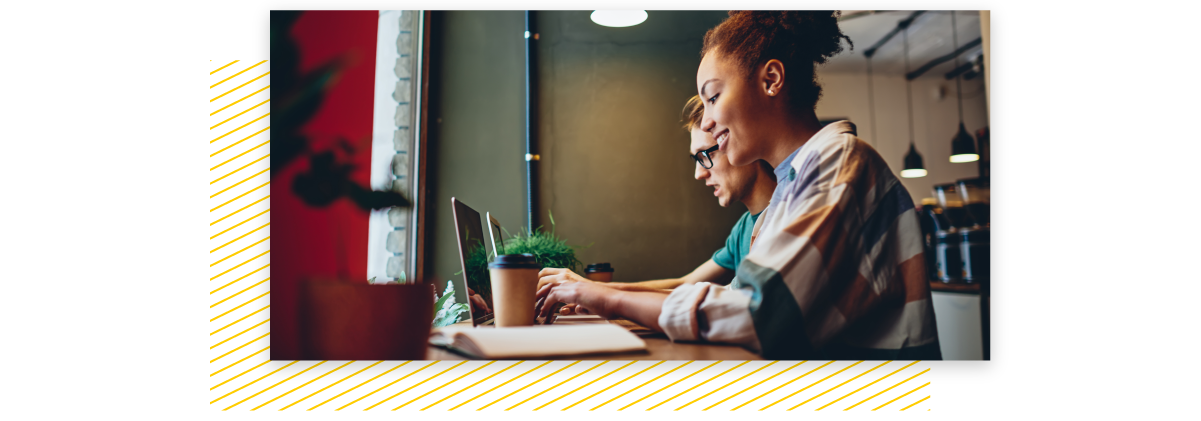Promote Academic Integrity in Remote Learning
Promoting and ensuring academic integrity in a digital classroom may seem more challenging than in an in-person environment. We can readily imagine how online exams offer increased opportunities for students to cheat when measured against those offered in a supervised in-person classroom. But research shows online assessments don’t increase instances of cheating when compared to those conducted in-person.
As Heidi Dieckmann detailed in a recent blog, there are many reasons students choose to cheat – many of which can be countered with intentional teaching methods. As an instructor, you can help curb a temptation to be academically dishonest. It always helps to begin by discussing the issue with your students honestly, regularly and without being patronizing or accusatory.
Education
Every university and college has a policy detailing what constitutes academic dishonesty and the consequences for those caught plagiarizing or cheating. Inform your students by sharing this code of conduct with them. Most often, this is done almost automatically by being included in the course syllabus. But take time outside of that introductory class to explain what academic dishonesty means in your class specifically. Take a minute to model what type of referencing is and isn’t acceptable. This level of specificity will help your students understand what it really means to create assignments and submit assessments honestly. You will foster a sense of accountability, making students aware of their own responsibility in the virtual classroom.
Frequency
Bring that education into every assignment. Talk about academic honesty ahead of every assessment and project. Perhaps, you ask students to complete a form acknowledging they understand the level of academic honesty expected of them for that assignment and the consequences should they cheat. This frequent reminder may seem excessive but in practice may help students keep responsible and honest academic behaviours top of mind.
Prevention
While educating and encouraging students will dispel dishonest actions for the vast majority of learners, some may still attempt to cheat. Previous students of your course may make it particularly tempting by sharing old exams, notes, and assignments. Take preventative measures by changing exams, projects, and lectures from semester to semester. Not only will you stop exam, note, and assignment sharing, you’ll keep your content fresh and relevant.


Modeling
Most people place greater trust in those who practise their word. Students are no different. Model the academic honesty you demand from your learners. This will help reinforce a culture of honesty and help students learn how to properly cite sources. References that may not be familiar, like citing an image or graph, may be present in your presentation deck, for example. Students will then be able to use your classwork as a guide for their own assignments, learning from your notes, presentation decks, and other posted resources. Furthermore, teaching by your own rules will normalize the act of attribution. This will build a culture of accountability and honesty in your virtual classroom.
Environment
Higher education is known for the pressure it can put on students – to get good grades, graduate on time, receive a scholarship, launch into a particular career, and the list goes on. It’s unlikely to find a classroom without some element of pressure. But by easing timelines and building assessments that are not high stress (like timed exams are, for example), you will help your students avoid feeling like their only option is to cheat.
In the context of learning remotely during a pandemic, when everyone is feeling added stress, this is particularly important. Remember students may be in different time zones, have unreliable internet, or be managing personal challenges and responsibilities (like caring for children or an ill family member). These circumstances outside of your virtual classroom can make a three-hour exam feel unmanageable. Extending timelines to provide students more breathing room – like offering a 24-hour submission window – can be the difference between cheating and honest effort.
Design
Remote teaching means understanding the goals of remote learning. No longer should memorization be the main method of examinations. Rather, make assessments open book. This eliminates all temptation for students to break rules by leaving notes available beside their desks, out of view from their camera. It also offers you an opportunity to truly assess learners’ understanding of your course. Use essay or short answer questions that require connecting ideas and concepts. If multiple choice questions better suit your course, create a larger bank of questions and create multiple versions of the exam. This will diversify the exams students receive, making sharing answers more challenging if students do attempt it.
Creativity
Trying new assessment techniques can make cheating nearly impossible. The tools available online are vast. A creative format may peak students’ interests and passions, strengthening their commitment to the course and discouraging ideas of cheating. This will ensure they are the true creators behind the content. For example, asking for videos or voice recordings instead of typed or written answers is a great way to use digital learning tools and engage students in formats that aren’t easy to copy.
Fostering ethics for a career
By tailoring your approach to academic integrity to the digital classroom, you will be propelling your students towards a more successful learning experience. Attending post-secondary education can be challenging and stressful for students. By acknowledging the difficulties and providing honest and supported ways to overcome the stress of higher education, you will be fostering a work ethic that students take with them through their education and beyond, into their careers.

